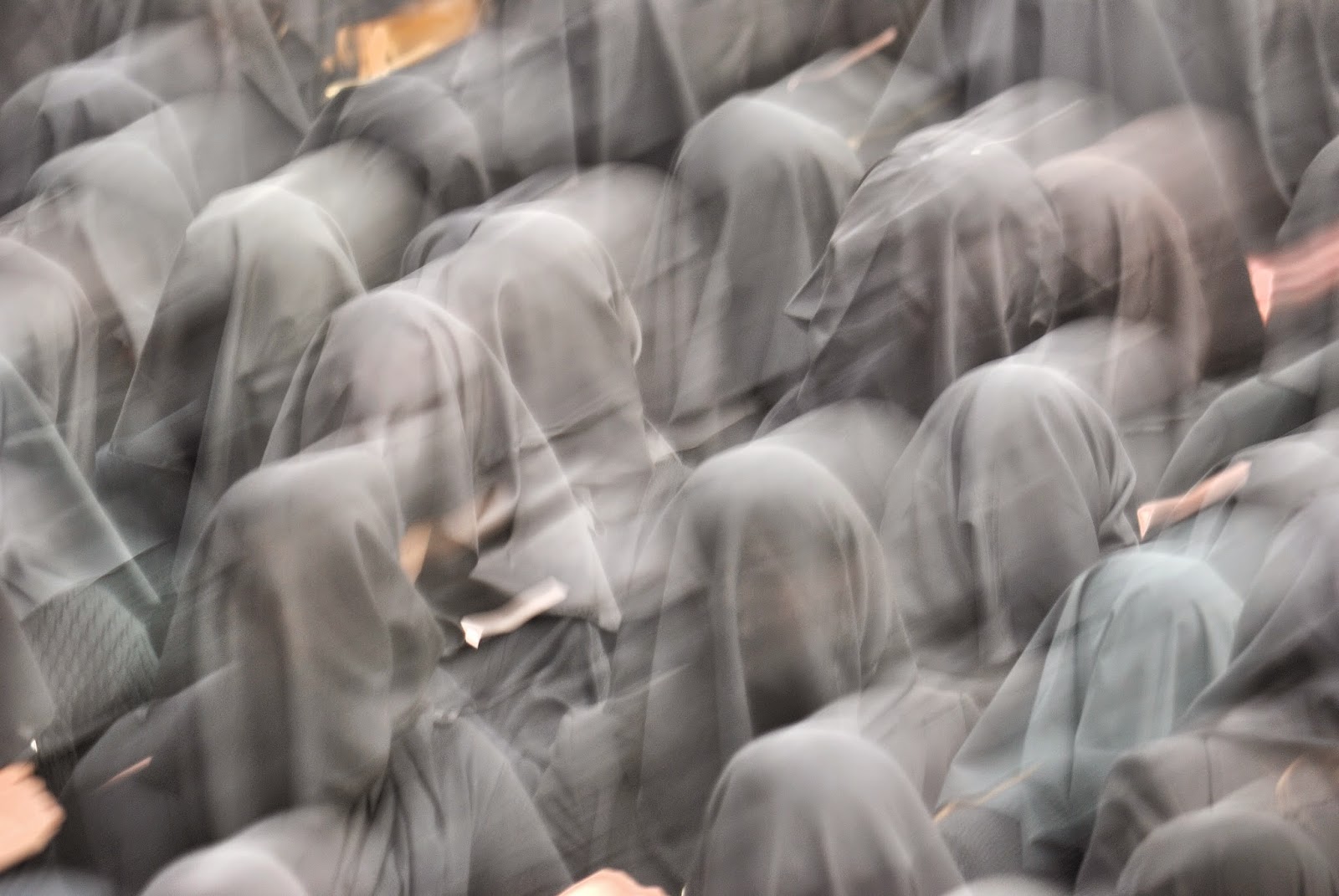This rite, called processione della Desolata, is celebrated in Canosa di Puglia.
These women are dressed of black as sign of desolation for the crucifixion of Jesus.
I looked forward to witness this event.
The procession of people follows the simulacrum of the Holy Virgin, portrayed with a sword stuck into the hearth.
I arrive in Piazza della Repubblica at 9.15.
My sister Erika has come along with me.
The piazza is already crowded.
I assume that it will be pretty difficult to find a place from which to take pictures.
However, I do not despair.
Walking by a small tower, I think to myself: "Who knows If I am allowed to come up".
Who cares!
So, I start climbing.
It is not so easy. I am not that fit anymore.
Finally, after having struggled for few but long seconds, I succeed in reaching the top of the tower.
It is almost two meters high.
I cheer up the people present.
"Are you a journalist" I ask.
The lady with the microphone replies: "I'm, indeed. We are reporting the procession on streaming. I work for la terra del sole".
I imagine the happiness of those who have migrated from this land, watching the processione della desolata on streaming.
The procession is getting closer and closer.
The ladies dressed of black sing a litany which touches the soul.
It is indescribable.
After having overcome the tower, the sound gets lower and lower.
However, I stay for a couple of minutes in a contemplative status.
What I have just witnessed seems to me like a tragedy.
The Greek philosopher Aristotle, had said that watching a tragedy is tremendously important, because it cleans up the soul.
How true and actual is this thought.
The journalist comes back asking me if I wish to be interviewed.
"Of course" I say, "why not".
She introduces me as a journalist who comes from Manfredonia. Fair enough.
"Why did you come here?" she asks.
"I'm here because I wished to take part to the celebration of the Holy Saturday here in Canosa. When I firstly heard of women dressed like some women do in the Arabic countries, I said to myself, you can't miss it."
The comparison to certain Arabic costumes let the journalist choke.
"Canosa is incredibly rich of art as well as of history" I carry on.
The journalist seems to be very proud of it.
Let me just point out that this town has three museums.

Beside the church of San Sabino, it is allocated the mausoleum of Bohemond I, Prince of Antiochia.
Bohemond I, Norman, son of Robert Guiscard, is known for having undertaken the 1st crusade.
A guide let us have a look at the inside of the Mausoleum.
The door is covered by decoration which vaguely look Arabic.
I may look heretical, but I guess that something of the Arabic costumes are still in the Apulian cultural heritage.
The below fan (11/12th century), exposed in one of the museum of Canosa, is decorated in Kufic.
It reports the Kufic word Al-Yumm, which stands for "happiness".
Apulia is a land where several cultural influences have taken place.
In my opinion, the Frederick II touch is still occurring in Apulia.
Born in Jesi (Marche), raised in Palermo (Sicily), Frederick II went down in history as puer Apuliae.
So, Frederick II would have been glad of watching today the processione della Desolata
PS.
Please click here, should you wish to view more pics.







Bravooooooo
ReplyDelete